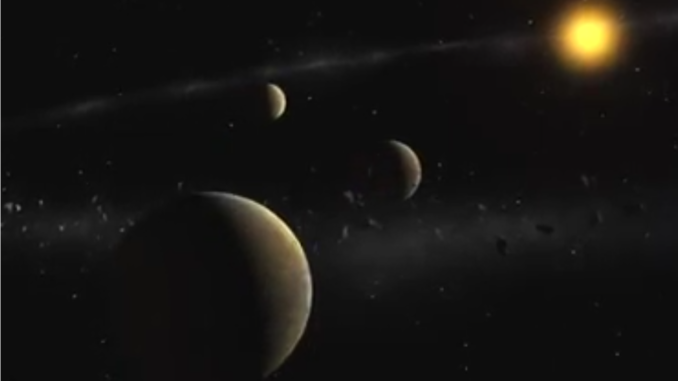
You might recall the Night Owl from a year ago about the seventh grade student, Alexander Mather, who won the NASA Mars rover naming contest. He suggested “Perseverance“, and NASA officials announced the winner in front of Alexander’s classmates, live on national TV and streaming internet. For a short time, a very bright spotlight shone on him.
Two teenagers now share brief fame of their own, albeit a spotlight not as bright nor as memorable as Alexander enjoyed. Yet, discovering four extrasolar planets orbiting an alien star 200 light-years distant is a much greater accomplishment than simply coming up with the best name for NASA’s latest robotic explorer.
Kartik Pinglé and Jasmine Wright were participating in the Student Research Mentoring Program at the Center for Astrophysics, Harvard & Smithsonian, when they made their discoveries.
Kartik is 16 years old and a high school student at Cambridge Rindge and Latin School, in Boston. He loves math.
Jasmine Wright is 18 years old, and will soon be graduating from Bedford High School in Bedford, Massachusetts. She’s been accepted into the 5-year astrophysics master’s degree program at the University of Edinburgh. Jasmine recently had the opportunity to speak about her discoveries to a group of excited and enthusiastic Girl Scouts who were inspired by her accomplishments.
By studying the data collected by NASA’s Transiting Exoplanet Survey Satellite (TESS), Kartik and Jasmine spotted four exoplanets orbiting a star (HD 108236) very much like our Sun, except it’s about 50% larger. The discovery was possible because the star is very bright, and the orbits of the exoplanets took them right between the alien sun and the vantage point of TESS (line-of-sight). As each one transited (passed in front of) HD 108236, the light coming from the star dimmed. This was the first clue found in the data that exoplanets orbited the star, which warranted a closer look. From that closer look, many details about the exoplanets were ascertained including size, composition, orbital periods around their star, and so on. Three of the four planets in this distant system are described as sub-Neptune because they’re smaller yet similar to the Solar System’s eighth planet, while the fourth is a rocky, super-hot (1,500°F), super-size Earth (1.5 times bigger than our home planet) which orbits closer to it’s star. The newly-discovered planets are now known as HD 108236 B, C, D and E.
The pair have co-written a formal paper, published in The Astronomical Journal in January, 2021. Their discovery is important, because HD 108236 and its planets are so similar to our own Solar System. We can learn alot about our home by studying this other system and how it formed.
“2 Teenagers Discover Four Exoplanets Including A Earth-Like Planet | High School Students” (2:15):
Question of the Night: What were you doing when you were a teen?
